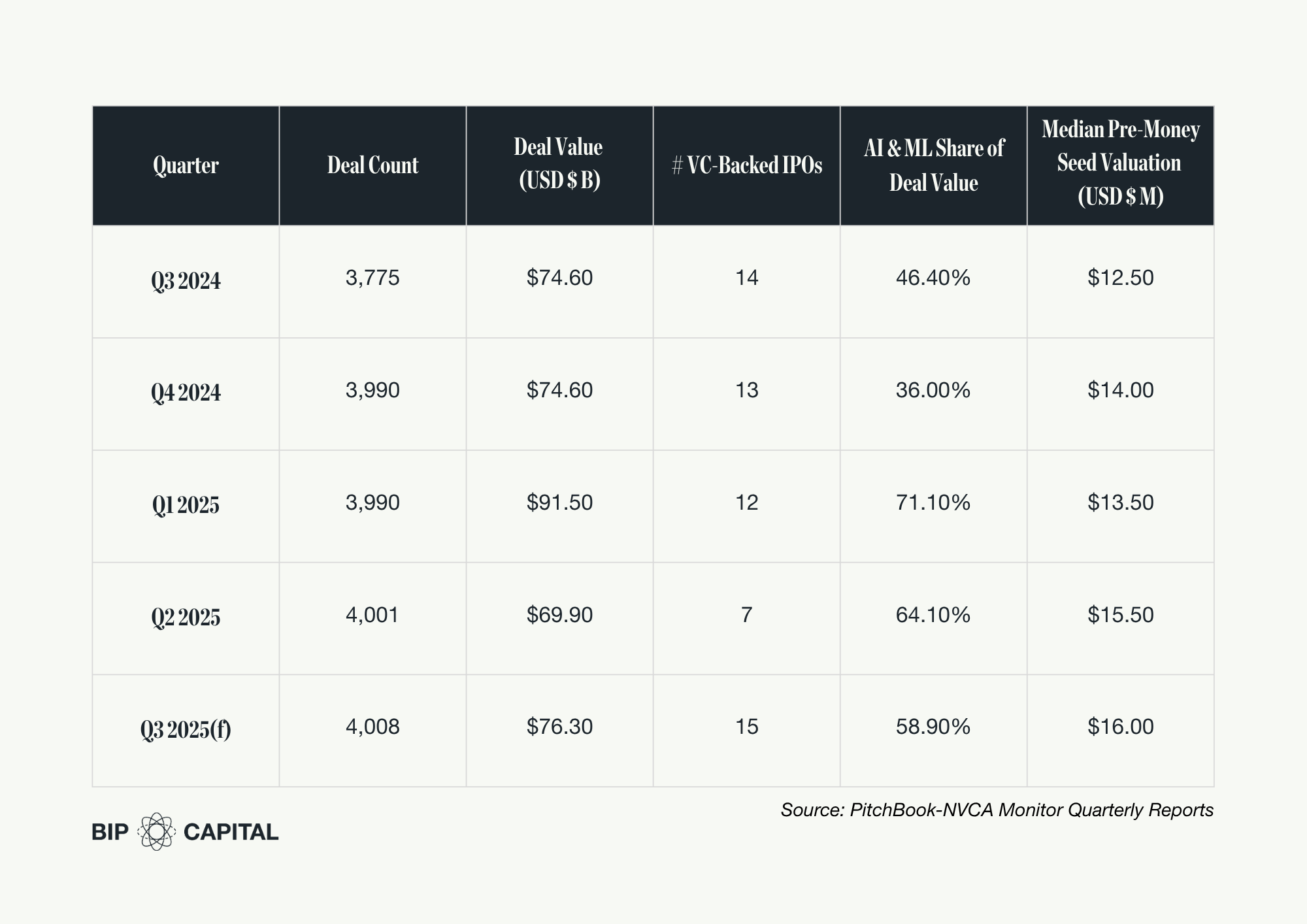2024 Venture Capital Investment Trends and Impacts Report
Explore 2024 venture capital trends, from AI dominance to late-stage deal growth. Insights for investors and founders to navigate a shifting VC landscape.
The first six months of 2025 offered founders and funders a full‑scale stress test. Inflationary stickiness slowed the Fed's rate‑cut cadence, new tariff policies jolted public markets, and the AI gold rush continued to reorder capital flows. Yet venture financing proved remarkably durable. Drawing on the Q3 2024-Q2 2025 PitchBook‑NVCA Venture Monitor reports, plus early data from the upcoming State of Startups in the SoutheastSM 2025 report, this mid-year update offers some of the metrics that matter most right now: where private capital is concentrating, which stages and sectors are winning wallet‑share, and how the Southeast stacks up against traditional VC hubs.

Despite policy shocks, U.S. venture funding is pacing ahead of every pre‑2021 year.
Venture capital is still the engine of U.S. startup finance, despite a 25% QoQ dollar dip caused by the one-off $40 billion OpenAI monster round in Q1 2025. Growth-stage checks remain on a record-breaking trajectory, propelled by a handful of AI mega-deals. Liquidity pressure is high, and fundraising momentum is slow as funds prioritize returning capital to LPs. The 'new' GP-LP bargain has capital efficiency and measured deployment at the center – replacing the breakneck pacing that characterized the funding environment between 2020 and 2022.
Why It Matters: LPs are pacing their commitments, methodically releasing record levels of dry powder.
Runway extension rules—from pre‑seed to pre‑IPO.
Startups across the funding spectrum are dialing back the breakneck pace that characterized the pandemic 'spike' generally seen between 2020 and 2022. Investors and founders are embracing a "runway-first" mindset, prioritizing capital efficiency, and demanding strong business models with clear evidence of sustainable traction and resilience. Even as deal activity rises above pre-pandemic levels, it's doing it slowly – the typical growth-stage company now waits nearly two years between raises. Of course, these rules are being broken by founders and investors wrapped up in the AI frenzy.
Why it Matters: Investor‑friendly terms and capital efficiency now outweigh 'growth-at-any-cost' funding – unless you're a founder building core AI infrastructure.
One vertical is eating them all.
AI has vaulted from promising technology to the dominant capital magnet. In Q1 2025 alone, AI/ML startups absorbed an unprecedented 71% of all U.S. venture dollars, even after stripping out OpenAI’s jumbo round. Traditional SaaS kept its momentum with median deal sizes nearing $20M and average pre-money valuations exceeding $500M. Healthcare Tech is holding firm despite fewer deals. AI is reshaping every funding conversation, but we're not counting out software, healthcare, and sustainability plays.
Why it Matters: FOMO and hype cycles are real, but diligence drives outcomes. Even in hot sectors, startups have to prove they can provide a technical edge, data moat, and clear monetization pathways.
Capital remains hub‑centric, but the Southeast is closing the gap on volume, diversity, and outcomes.
In 2025, the Southeastern startup investment landscape continues to evolve and find its rhythm after years of economic swings. Collectively, the states in the Southeast outperformed many other regions in deal count and capital deployed. Individually, some states are normalizing to pre-pandemic deal levels, while others are accelerating past them with renewed momentum. The region continues to adapt, build, and grow a resilient startup ecosystem, even amid capital constraints and economic recalibrations.
Why it Matters: Unlike coastal hubs concentrated in AI and SaaS, Southeastern states blend IT with non-cyclical sectors like healthcare, fintech, logistics, and manufacturing, providing resiliency to well-built investment portfolios.
Mid‑2025 data shows that U.S. private capital is bending, not breaking, under macroeconomic pressures. Liquidity work‑arounds (e.g., secondaries), extremely disciplined capital deployment, and ongoing AI tailwinds are keeping the Innovation Economy moving. In the Southeast, a careful mix of sector bets and growing micro-funding activity is helping to transform headwinds into opportunities.
A: Florida, with an estimated 700 investments by year‑end.
A: $3.3M as of Q1 2025—up 40% year‑over‑year.
A: Roughly 71% of all U.S. venture capital was deployed in the first half of 2025.
A: October 2025, with early access available via email sign‑up today.